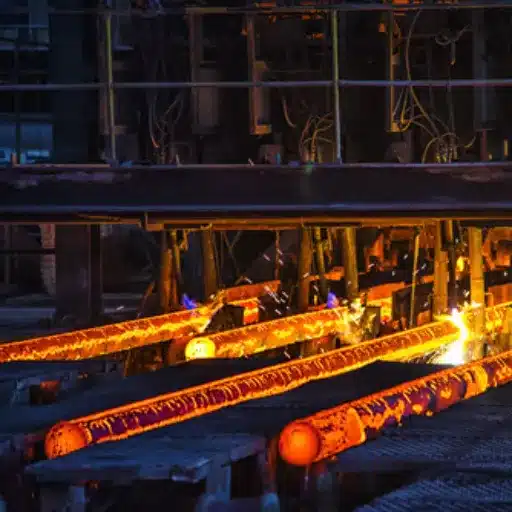The upshot of stainless steel forging is the millennia-old combination of painstaking precision, great smashing and human skills that result in parts that can endure among the harshest and most demanding environments. Aerospace, military, and medical applications are just some of the many territories where the unique properties of stainless steel make it the preferred material for construction, i.e. those that require great resistance to corrosion as well as good durability. This text will navigate the reader through the extremely delicate and resource-consuming process of forging stainless steel, exposing in detail the main technical steps, difficulties, and advantages involved. If you are a person working in the metal industry or just someone who is inquisitive about this essential industrial process, then this guide of vast knowledge is what you have been looking for in order to comprehend both the science and artistry behind forging stainless steel.
Introduction to Stainless Steel Forging
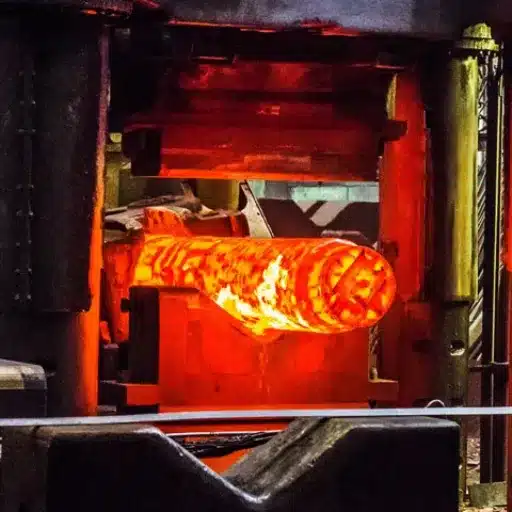
Stainless steel forgings are made by heating the metal to a very high temperature, shaping it with the help of up-and-down forces, and letting it cool afterward in controlled conditions. This method strengthens the metal and makes it more elastic but still won’t affect its resistance to rust.
What is Forging Stainless Steel?
Forging stainless steel is a way of processing that combines compressive force application with shaping the material in such a way that its properties are enhanced. Usually, the force is applied by such means as a hammer, press, or die, which refine the grain structure of the stainless steel. Thus, the forged piece has superior strength, durability, and wear/corrosion resistance compared to the same piece made through other processes like casting. These properties make forged stainless steel suitable for the use in industries with high demand, such as, aerospace, automotive, medical, and oil & gas.
Stainless steel is one of the most used materials in different applications mainly because of its excellent resistance against corrosion and heat. It is composed mostly of iron, chromium (at least 10.5%), and varying amounts of nickel, carbon, and sometimes other elements. The forging process involves plastic deformation of the metal at high temperatures that are usually between 1,900°F and 2,300°F (1,040°C to 1,260°C) depending on the alloy used. The process keeps the steel soft and easier to work on while it still retains its corrosion resistance.
Importance of Stainless Steel in Manufacturing
Stainless steel is one of the main materials used in the manufacturing process due to its wonderful properties such as resistance to corrosion, toughness, and adaptability. Its capability of withstanding very high and low temperatures and extreme environments makes it a must-have in different production such as that of construction, automotive, and aerospace. A recent report indicates that the global market of stainless steel reached a valuation of almost $104 billion in 2022 and it is anticipated to grow at a compound annual growth rate of 7.5% during the years 2023-2030. This growth signals an ongoing requirement for stainless steel in different fields.
Market Insight: One of the primary factors for stainless steel to be incorporated in the industry is its tremendous strength-to-weight ratio, which opens opportunities in the design of light yet strong components. According to studies, 304 stainless steel, which is the most commonly used grade, has a tensile strength of about 515 MPa together with excellent corrosion resistance properties, and thus, it can be used for food processing machines and chemical storage tanks. Besides, the development of new stainless steel alloys such as duplex stainless steels gives access to higher mechanical properties, for instance, the yield strength of standard austenitic stainless steels is doubled, and thus, their application in critical areas of technology can be further extended.
Advantages of Forging Stainless Steel
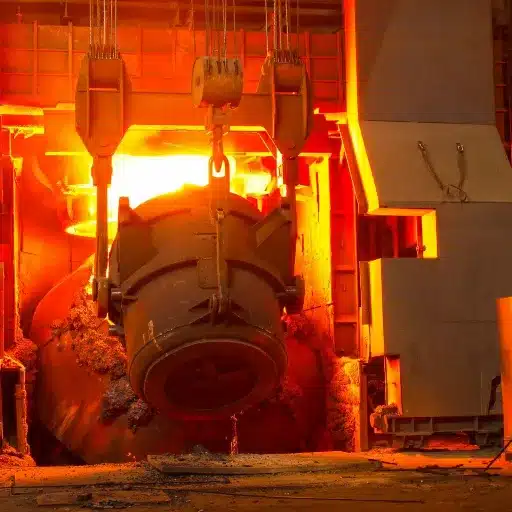
Stainless steel forging delivers many advantages, such as the material’s refined grain structure, which is subject to the forging process and results in enhanced strength and durability. Furthermore, it importantly increases the material’s fatigue and wear resistance, making it the best choice for high-performance applications.
Excellent Strength and Durability
The end product of forged stainless steel is super strong and durable, thus it is the best material for high-performance and long-lasting applications. At the same time, the forging process will refine the grain structure of the material inside, which will result in better mechanical properties in terms of tensile strength, yield strength, and impact resistance. Data from current studies indicates that forged stainless steel can often attain tensile strength values greater than 580 MPa (megapascals), depending on the specific alloy and heat treatment applied. It is a favored option in aerospace, automotive, and construction industries due to the fact that reliability under extreme conditions is of paramount importance.
Performance Enhancement: Moreover, forging combined with stainless steel’s inherent corrosion and oxidation resistance guarantees prolonged durability even when the conditions are harsh. For example, forged parts made from 304 or 316 stainless steel show outstanding performance in environments with chemicals, moisture, and temperature fluctuations. Besides, new innovations in forge technology such as isothermal and precision forging are also augmenting material utilization and strength distribution, thus leading to high-quality outcomes with minimal waste. These traits point out why forged stainless steel is still a primary choice in both heavy-duty applications and sophisticated, high-stakes projects.
Increased Resistance to Corrosion
Stainless steel’s natural resistance to corrosion, which is an effect of its chromium content (usually between 10.5% and 30%), is an outstanding feature that makes it very fit for harsh environments. The chromium in the alloy leads to the creation of a passive oxide layer on the surface, which can heal itself when damaged. This layer not only prevents oxidation and the penetration of corrosive agents but also greatly increases the component’s lifespan in very corrosive environments, like marine, chemical, and industrial ones.
Recent studies show that the newly developed alloy formulations, like duplex and super duplex stainless steels, are even more resistant to pitting and crevice corrosion than the standard austenitic grades such as 304 and 316 stainless steel. Research has found that super duplex grades can tolerate conditions with more than 35,000 ppm of chloride concentrations, which makes them the material choice for offshore oil platforms, desalination plants, and chemical processing units. Moreover, new techniques in electrochemical polishing and surface treatments can further decrease surface roughness, resulting in reduced susceptibility to microbial-induced corrosion (MIC) and improved lifetime.
The Stainless Steel Forging Process
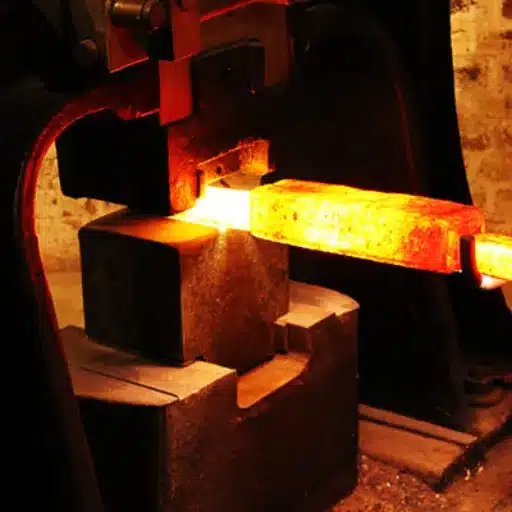
In the stainless steel forging process, the metal is heated to a very specific temperature that is above its recrystallization point which makes it easier to mold it into a desired shape using compressive forces. The process not only makes the steel’s properties better such as toughness, strength, and wear-resistance but also gives the steel a better atomic structure by decreasing porosity and making it more uniform.
Defining the Forging Temperature
Stainless steel forging temperature is one of the most important factors that determine how the material will behave mechanically, what kind of microstructure it will have and its overall performance. Usually, stainless steel can be forged at a temperature of 1,700°F to 2,200°F (927°C to 1,204°C) depending on the steel’s grade and composition. The material is said to be in the right temperature range for processing because it has reached the desired plasticity while the metal still has its strength.
For example, austenitic stainless steels (like the 304 and 316 grades) will be forged at about 1,900°F to 2,200°F (1,037°C to 1,204°C) since at these temperatures the steels’ already high levels of chromium and nickel get further activated and this lets them be easily formed and corroded at the same time. On the contrary, martensitic and ferritic stainless steels (410 and 430 grades) will require slightly lower heat treatment, which will range from 1,700°F to 1,950°F (927°C to 1,065°C) because their carbon content plays a major role in dictating how much they can be hardened and thus their toughness.
Forging Stainless Steel Steps
Step 1: Material Selection
The very first step is to choose the right grade of stainless steel that would be best suited for the application. Stainless steel grades that are commonly used for forging are austenitic (like 304, 316), martensitic, and ferritic. The preferability of austenitic grades for their good corrosion resistance is, however, accompanied by the necessity for very accurate temperature control.
Step 2: Preheating
Heating the stainless steel to a uniform temperature will not only prevent thermal shock but will also make sure that the deformation is consistent. For austenitic stainless steels, the preheating temperature normally suggested is in the range of 1900°F to 2300°F (1038°C to 1260°C). It is very important to use calibrated equipment for monitoring the temperature accurately, as even slight deviations can give rise to microstructural defects.
Step 3: Forging
In the course of the forging process, the material is shaped with the application of compressive forces. As the ideal forging temperature varies depending on the grade of stainless steel, it usually stays within the range of 1900°F to 2200°F (1038°C to 1204°C) for most of the austenitic grades. Overheating will result in grain growth, while lack of heating will cause either cracking or decreased formability.
Stainless Steel Grades Most Commonly Used in Forging
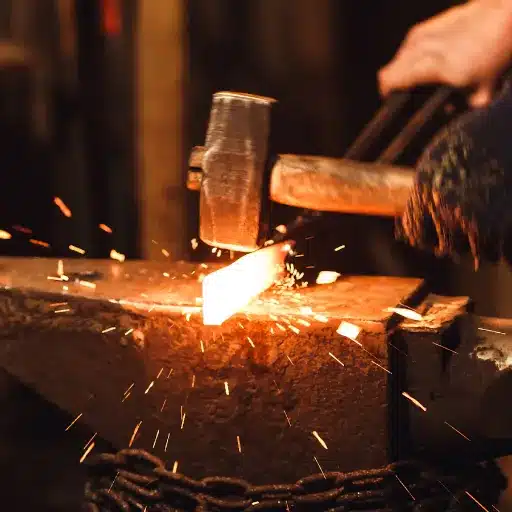
304 and 316 are the main stainless steel grades used for forging, I would say, among others. They are both austenitic grades that have great corrosion resistance and formability as well as 410 and 420, which are martensitic grades that are strong and hard.
Alloy Options and Overview of Various Grades of Stainless Steel
| Grade Category | Key Characteristics |
|---|---|
| 1. Austenitic Stainless Steels (300 Series) | Austenitic stainless steels are the most widely used type, accounting for around 70% of the global production of stainless steel. The 304 and 316 grades are part of this category. Grade 304, commonly called the “workhorse” of stainless steel, is composed of 18% chromium and 8% nickel, giving it corrosion resistance that is suitable for general-purpose use. Grade 316 has even better resistance to chloride environments because of the addition of 2-3% molybdenum, making it appropriate for use in marine and chemical processing applications. Non-magnetic austenitic steels are highly formable and their mechanical properties are maintained through a wide temperature range. |
| 2. Ferritic Stainless Steels (400 Series) | Ferritic grades such as 409 and 430 have high chromium content (generally 12-18%) and almost no nickel; hence, they are cheaper than austenitic grades. These steels are magnetic and recognized for their good corrosion resistance and excellent surface finish, thus, are used in automobile exhaust systems, construction, and appliances. Nevertheless, their moderate strength and lower toughness in comparison with other grades make them unsuitable for demanding applications. |
| 3. Martensitic Stainless Steels (400 Series) | Martensitic stainless steels, such as 410 and 440, are distinguished by their high strength as well as excellent wear resistance. These grades have a moderate amount of chromium (11-17%) and are usually heat-treated to increase hardness. Grade 410 is typical for cutlery and turbine blades, while 440, with more carbon, finds its applications in tooling and surgical instruments. But martensitic steels have only limited corrosion resistance as compared to austenitic ones. |
Tool Steel and Alloy Options
Tool steels and alloys are super-specialized materials specifically designed to cater to the rigorous demands of industrial applications. Tool steel is a subgroup of carbon and alloy steels that is defined by its hardness, wear resistance, and ability to maintain a cutting edge. Such steels are generally used in the manufacturing of tools for die, mold, and cutting implements. Depending on their chemical composition and intended application, the tool steels are usually divided into categories such as water-hardening (W-grade), cold-work, hot-work, and high-speed steel (HSS). The characteristics of each group vary, with some being more wear-resistant while others possess higher temperature strength, thus facilitating their use in different industrial sectors.
Alloy steels, in contrast, are metals that have been alloyed with certain elements to improve their properties such as strength, toughness, or resistance to environmental factors. The typical alloying elements are chromium, nickel, molybdenum, and vanadium. For example, chromium-molybdenum alloy steels are recognized for their excellent high-temperature performance and longevity, which is why they are widely used in the automotive, aerospace, and energy sectors.
Forged Stainless Steel Applications
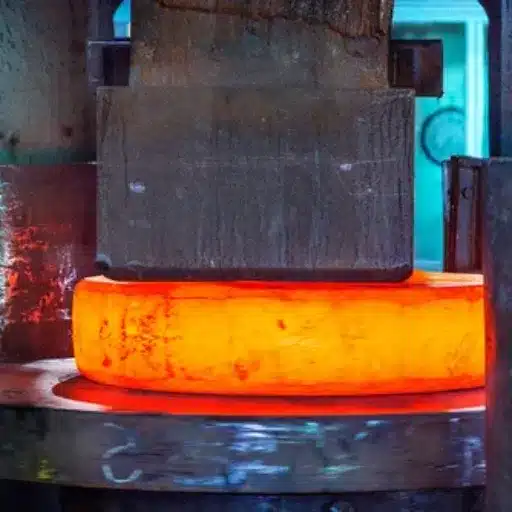
The main industries that consume forged stainless steel are those using high-strength materials and the ones working with corrosion-resistant steels. The presence of forged stainless steel is noted in the making of critical components such as valves, fittings, flanges in the oil and gas sector, as well as in the production of high-quality equipment for chemical and food industries.
Industries Consuming Forged Stainless Steel
1. Aerospace Industry
The application of forged stainless steel in the aerospace industry is reigning in the manufacturing of aircraft engines, landing gear, and structural frameworks faced with sliding temperature ranges and mechanical stress. As per industry reports, these parts of forged stainless steel not only fuel efficiency and service intervals but also maintain the quality of the aviation pressurized high duties.
2. Oil and Gas Sector
Among all the metals that corrode fast and under heat-treated conditions, forged stainless steel is the least affected in the oil and gas industry. To name the products, quality valves, flanges, drill collars, etc., bear the mark of resistance against the presence of the material to pitting and stress corrosion cracking. Figures show that the utilization of forged fittings on drilling platforms in the offshore area is a way to increase operating safety while at the same time reducing the probability of equipment failures.
3. Power and Energy Generation
Forged stainless steel is the key to the success of power generation coming from nuclear reactors to wind energy and is characterized by its durability and stability under fluctuating loads. For instance, the energy efficiency of turbine blades and gear systems made of forged stainless steel is enhanced. Research conducted recently points out that parts forged from stainless steel can bear millions of stress cycles without breakdown, thus facilitating continuous operation in energy production areas that are critical.
Concrete Applications and Case Studies
Forged stainless steel is a widely-used materials in different manufacturing fields due to its extraordinary strength, toughness, and high resistance to environmental factors. Its use in the aerospace industry is one of the most significant applications, where stainless steel forgings are set in turbine engines, landing gears, and structural support. These pieces can defy the most extreme working conditions and thus ensure the very reliable and safe operation which is a must in the aviation industry. A recent report from Grand View Research claims that the global marketplace of aerospace materials is going to witness a growth rate of 6.6% CAGR from 2023 through to 2030, with stainless steel products playing a crucial role in this huge expansion due to their excellent performance in challenging conditions.
Marine Engineering Application: Moreover, the use of forged steel is necessary in the field of civil marine and marine engineering. Ocean structures and ships are made with materials that can withstand the constant saltwater and other corrosive environments. Research shows that the installation of stainless steel in props, hulls, and platforms of the offshore oil industry offers much longer operational life compared to the use of traditional materials. For example, duplex stainless steel grades are winning in the race to be the choice material for building the next-gen subsea pipelines because of their superior pitting and crevice corrosion resistance wealth.
Reference Sources
-
Grand View Research: This report provides insights into the global stainless steel forgings market, including its size, growth rate, and key drivers, making it a valuable resource for understanding market feasibility. Grand View Research – Stainless Steel Forgings Market
-
Steel Pro Group: This source details the forging process, properties, and applications of stainless steel, offering technical and practical insights into its feasibility for various industries. Steel Pro Group – Stainless Steel Forgings
-
Cornell Forge: This article discusses the applications of stainless steel forging across industries like architecture, construction, and medical, highlighting its versatility and demand. Cornell Forge – Stainless Steel Forging Applications
Frequently Asked Questions (FAQs)
❓ What are the advantages of forging using stainless steel?
Stainless steel can be considered as a perfect metal for forging considering its great strength and durability along with comprising in a way that it is very easy to work with and at the same time resistant to corrosion and extreme temperatures. One of the key factors is that the forging process itself will improve the quality of the material drastically, leading to the production of stronger products. Moreover, stainless steel being of various grades can be utilized in innumerable ways from marine to drug industries.
❓ What is the difference between forged and cast stainless steel in terms of characteristics?
The major distinction between forged and cast stainless steel revolves around their respective production processes and resultant properties. A forged piece of stainless steel generally has better mechanical properties and higher ductility and toughness, thanks to the controlled grain flow during forging. On the other hand, cast stainless steel might be less homogeneous and could even have inclusions that would render it weaker and less durable. Hence, for those applications where the strength of the material is of utmost importance, forged stainless steel is preferred over cast.
❓ What are the most frequent stainless steel grades that are used for forging?
The most common grades of stainless steel used for forging are 304 and 440. 304 is very much sought after for its anti-corrosive properties, hence it has a wide range of applications, whereas 440 is known for its hardness and it comes with the price of being slightly less corrosion resistant due to the higher carbon content. There are other grades too meeting the special needs of certain properties and thus helping to prolong the life of the products made of those grades.
❓ What are the forging temperatures for stainless steels?
Stainless steel forging temperatures usually fall between 2100°F to 2400°F (1149°C to 1315°C) but this range can be narrower or on the higher side depending on the grade and the composition of the alloy. Keeping the correct forging temperature is very important as it directly impacts the condition of the steel and finally the quality of the end product. The right heat treatment seasons such as quenching and tempering further increase the mechanical properties of the stainless steel that has been forged.
Key Takeaway
Forging stainless steel is a sophisticated manufacturing process that combines high temperatures, precise control, and expert craftsmanship to produce components with exceptional strength, durability, and corrosion resistance. From aerospace to marine applications, forged stainless steel continues to be the material of choice for industries demanding the highest performance standards.

